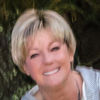Suggestions please for shooting Alaska outdoors
Jan 5, 2014 09:53:27 #
amehta wrote:
I think sometimes we forget the context of the person asking the question, both their goals and their budget. The polarizer for one of these lenses costs more than the OP will spend on the new lens to put on a D5100. I think she's also realistic that her shots will probably not be submitted to Outdoor Photographer. :-)
That's true for a high end polarizer. There are plenty of reasonably priced polarizers that will do a good job and will be far better than no polarizer at all.
Jan 5, 2014 09:59:37 #
wabbag
Loc: New Boston ,MI.
Might be a good idea to take something to protect your camera gear camera , lens .When I was there July 15 to July 30 in 2009 it rained at some point almost everyday.
Jan 5, 2014 10:02:58 #
True. I was there for 10 days in late July and early August. I never saw the sun. Saw plenty of rain drops.
Jan 5, 2014 10:24:23 #
madshad
Loc: upstate new york
menalice awesome that you are going to Alaska! my wife went last year in july and the weather was perfect!! I am a beginning photographer and took a canon sx500si. I found that at most times I didn't have time to use a tripod or a monopod of any kind for animals or even a lot of scenery,especially on the whale watch boats.the boats and whales do not stop and the people are also moving all the time.your best bet is to hand hold and take a lot of shots!!!If I can emphasize anything it is to take as many shots as you can and delete later!!! have a great trip I wish I was going again !!!!!!!
Jan 5, 2014 10:35:49 #
amehta wrote:
The brandname doesn't matter, but the i quality /... (show quote)
As long as that's all there is to it -- LOL :-D
Jan 5, 2014 10:40:27 #
Please check out the Tamron 18-270 F3.5 - 6.3 lens. A lot of people in here use it and like it. I did the Alaska trip a couple of summers ago...carried a tripod...a Nikon 150-500 lens and my Nikon kit lens. A monopod would have been easier..hardly used tripod, and if I would have know about the Tamron, it would have been the only one I needed. If you were going there for a special photography shoot that would be different and you might need a tripod or a bigger zoom. For traveling Alaska to see it's beautiful wonders and capture fantastic photos, the Tamron would be all you'd need. My recommendation, a monopod and the Tamron 18-270. (Newest model) Check out my Flickr page..a lot of the photos are with the Tamron. I love it...great walk around lens.
Jan 5, 2014 10:54:18 #
camshot
Loc: Peterborough ontario Canada
Be sure to take the White Pass rail trip from Skagway to the Yukon, it travels up 3000 feet and takes you through the most beautiful countryside.You can get out on the back of the cars to take photos and the train goes slow enough to get remarkable shots.
Jan 5, 2014 10:54:35 #
amehta
Loc: Boston
menalice wrote:
As long as that's all there is to it -- LOL :-D
Yep, that's all!
If anyone could do it, the pictures wouldn't be special, they'd be snapshots. We want to take the shots that everyone else doesn't. Part of it is to go special places like Alaska. Another part is to make better photographs.
Your mission, should you choose to accept it, is to go to Canada/Alaska and create 5 spectacular images. This topic will self destruct in 5 seconds... ;-)
The test for "spectacular images" is easy: do you want to make an 8x10 or larger print and put it on your wall?
Jan 5, 2014 11:01:15 #
I spent six weeks in Alaska during June/July 2012. Exposing for snow was never a problem, and I covered the state from Juneau to the Arctic Circle. I encourage you to visit Homer and Ninilchik, both on the Kenai Peninisula; and the Dalton Highway is fun to travel, although north of the Yukon River is only worth covering for the "made it to the Arctic Circle" bragging rights (like I used above). Trust me, it's a kick to shoot, hand-held at midnight.
Jan 5, 2014 11:13:53 #
menalice wrote:
We are planning a trip to Alaska this summer and rather than buy postcards (jk) I'd like to get some really good shots of the outdoor scenery. I know, "bright, overcast, snow, animals, (okay, I'll stop because the list don't). I am looking for a lens (an affordable lens) for shooting the outdoors. I'm thinking these will be mostly from a tripod.
We are planning a trip to Alaska this summer and rather than buy postcards (jk) I'd like to get some really good shots of the outdoor scenery. I know, "bright, overcast, snow, animals, (okay, I'll stop because the list don't). I am looking for a lens (an affordable lens) for shooting the outdoors. I'm thinking these will be mostly from a tripod.
First.....you are going to absolutely love it.
We went last summer for 3 1/2 weeks. Each day was remarkable, only to be topped the next day.
Since you are driving, you have plenty of room. Take a tripod and a monopod. The tripod will see limited use but if you want a midnight sunset pic of Denali there is no substitute.
Buy mosquito headnets as well at DEET. Be extremely careful with the DEET. Residue of it on yoru hands can turn your soft camera grip to mush. June is peek time for mosquitos in the interior. Some days you simply couldn't stand it without the nets.
Not sure what your focus options are on the 5100, but if it has continuous focus mode (where it tracks the subject and changes focus constantly) you need to practice switching from regular focus to continuous quickly. Bald Eagles, whales and bears don't stop to pose. Before you go, practice your bird in flight and other wildlife shots.
Heed MT Shooter's advice. He's probably shot more in the wild than most of us put together. A good zoom will be really handy. As the photos below show, sometimes you will get pretty close.
I have other pics at the zenfolio link below. Also, feel free to message me if you have any detailed questions. My wife and I felt it was the trip of a lifetime.
Posing for just a second before taking flight
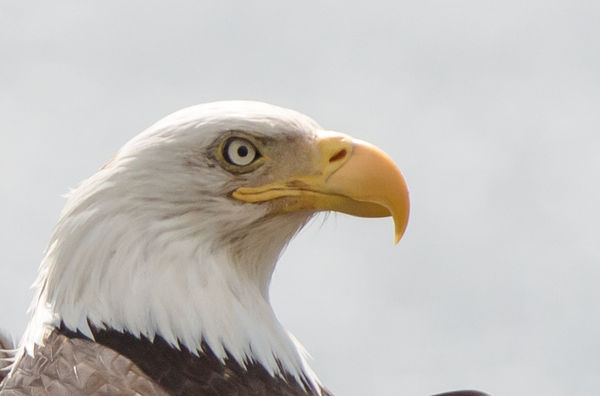
Quick switch to continuous focus caught him swinging around
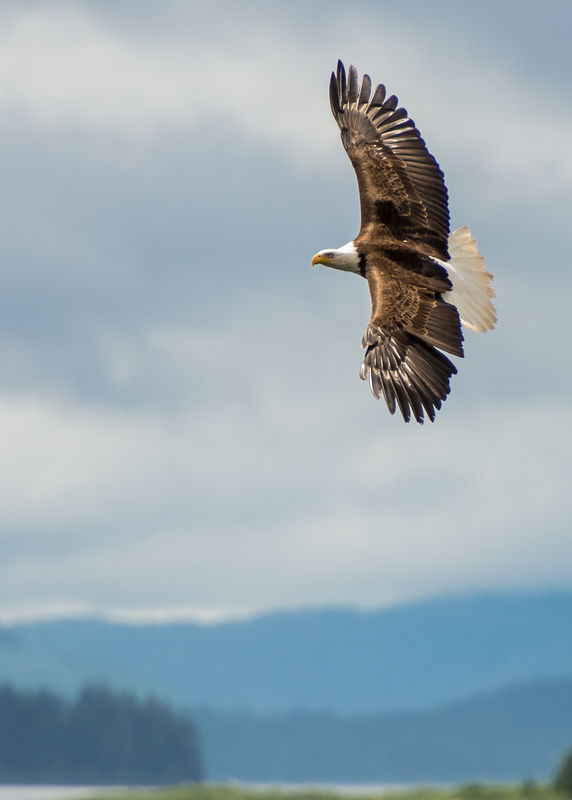
..and sometimes you feel too close
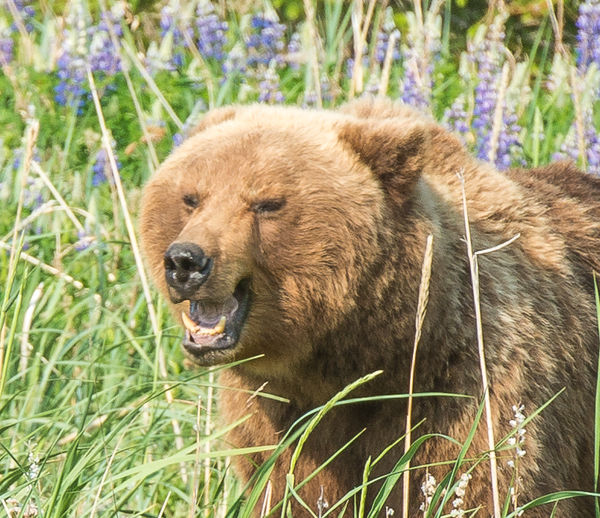
Jan 5, 2014 11:29:04 #
Twardlow
Loc: Arkansas
amehta wrote:
If you're somewhere with snow right now, practice during the next few months photographing squirrels, deer, birds, or other wildlife in the snow. If you have trouble with exposures, you can post pictures here and get help learning.
Learn to read your histogram, and read it often.
Terrible to get home and find impossible exposures on your best shots, and you may not be able to go back.
In your landscapes, always have something in the foreground, the middle ground AND the background.
Always use a tripod (not so much a monopod). It is a lot to carry, but you'll never be sorry when you look at your best stuff.
Manual focus at 1 meter, F16, and everything from 14" on should be sharp. Practice it before you go.
Have a great trip!
Jan 5, 2014 11:36:15 #
I have been to Alaska 3 times. As far as the mosquitoes, I think you will be in very heavily infested areas in the extreme south. DEET isn't good enough. They even attack you with DEET and DEET needs to be reapplied every hour or two. When you arrive in Anchorage you can go to a sporting goods store and purchase a hood which has a mesh screen like what beekeepers wear. It works 100% for your face. For your hands you should wear the lightest glove you can find so you can control your camera. Footwear is very important if you hike in forested areas such as in the south or the Inside Passage. What most native Alaskans wear in those areas which have spongy wet forest floor and which I own are rubberized boots called X-tra Tuff. They are extremely comfortable, fit like a fine shoe and do not let in any moisture. You can walk on rocks or in muck with them. As far as choice between tripod or monopod I have a suggestion which is something I occasionally use. Bring a very light tripod such as the aluminum model I own known as 3Pod. It sells for $100 with a small ball head (Adorama)and weighs only 2 pounds. It has 5 segment legs and folds up to a mere 12 inches which means it easily fits into a day pack. When you want a monopod you can close the legs together (you can do this with any tripod) and use the tripod as a monopod. Fully extended the 3Pod is about 4 feet 8 inches tall when the legs are closed together. While a monopod would weigh only a pound or so I don't think carrying a 2 lb. tripod which has a ballhead on it is a big deal especially since it can be carried in a day pack. You might want to do some night photography and a tripod is indispensable for that. As far as lens recommendations I would recommend 2 short zoom range zooms rather than one extremely wide range zoom. If you can afford it I recommend a 24mm-70mm f4 lens (the f2.8 lenses cost much more and something with a 300mm focal length for the wildlife. As you will be working with a crop factor a 300mm lens will equate to 450mm full frame equivalent and you need all of that for some of the wildlife such as grizzly bears or rutting elks (both are dangerous). If you hike in the wooded areas you need to purchase bear spray ($50) and PRACTICE YOUR QUICK DRAW TECHNIQUE with the canister mounted on your belt. Practice quick draw without discharging the canister just so you have the peace of mind to know that you can react quickly. I have been charged by a subadult grizzly which I basically provoked by approaching his mother too closely. He bluffed but you don't know that a charging bear will bluff so it was definitely a high adrenalin moment. I had my tripod with ballhead and a 300mm lens on camera and snapped the tripod shut and raised it overhead and screamed at the bear as it charged. This was my way of maximizing my size. The bear was probably about 200 lbs, more than enough to dominate me. I had no spray on me at the time. Lastly, a couple of exotic and expensive places to recommend highly are the Pribilof Islands in the northern Bering sea which compares favorably to the Galapagos Islands which I have been to twice and The Kennicott Glacier Lodge where you can walk on the Root Glacier on your own at your own pace. Both places need to be booked at least 9 months in advance so you are interested in them a waiting list for cancellations might be available.
Jan 5, 2014 12:09:18 #
Slick50il
Loc: North central Ill L-P area!
Dress warmly, can get pretty cool in some areas! Been there twice and had to buy some warm clothes!
Jan 5, 2014 12:19:10 #
No matter where you look, you'll find incredible photo opportunities in Alaska! I had the best luck slightly underexposing landscapes...and as someone mentioned...increasing exposure for close ups of moose and griz.
On a non-photographic note, but one that might keep you more comfortable, we used Vitamin B-1 for three weeks before going to Katmai, Alaska one July and didn't get a single mosquito bite. (Got a great back-lit shot of my hiking buddy surrounded by mosquitoes but totally undisturbed by them) You also have to watch out for white-sock flies....they leave horrible welts, but the B-1 helped there too, while those who used DEET had lots of bites.
(Not meant as medical advice and there is no scientific evidence that B-1 works as a mosquito repellant, but it has for three in our family on numerous trips)
On a non-photographic note, but one that might keep you more comfortable, we used Vitamin B-1 for three weeks before going to Katmai, Alaska one July and didn't get a single mosquito bite. (Got a great back-lit shot of my hiking buddy surrounded by mosquitoes but totally undisturbed by them) You also have to watch out for white-sock flies....they leave horrible welts, but the B-1 helped there too, while those who used DEET had lots of bites.
(Not meant as medical advice and there is no scientific evidence that B-1 works as a mosquito repellant, but it has for three in our family on numerous trips)
Jan 5, 2014 12:36:19 #
The mosquitoes can be especially bad in some areas here in Alaska, so heed the need for DEET! We do have an open season on mosquitoes, with no bag limit, and no license required, so whack as many as you can! Be sure to bring some good quality rain gear, especially if you're going to be in Southeast Alaska. You will have many photo ops while here, so be sure your memory card can handle all your wonderful memories! Welcome to Alaska.
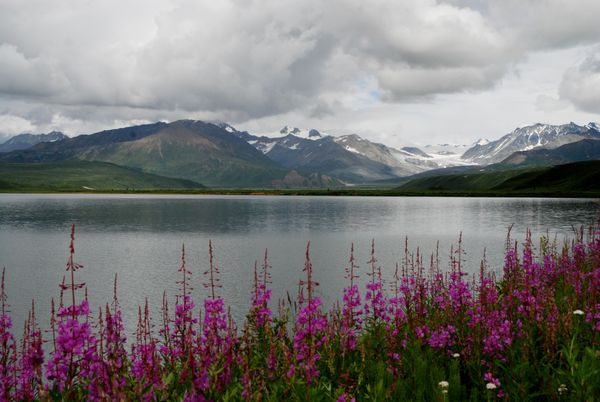
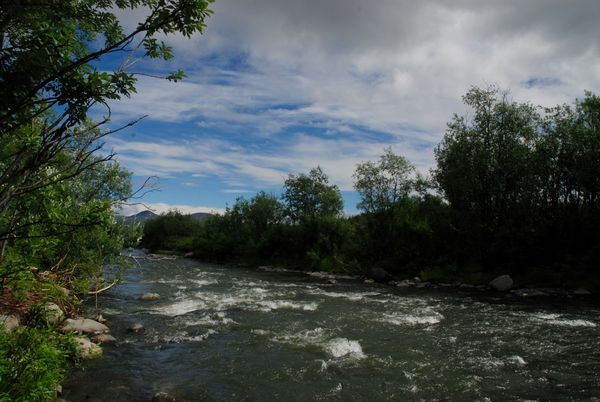
If you want to reply, then register here. Registration is free and your account is created instantly, so you can post right away.

